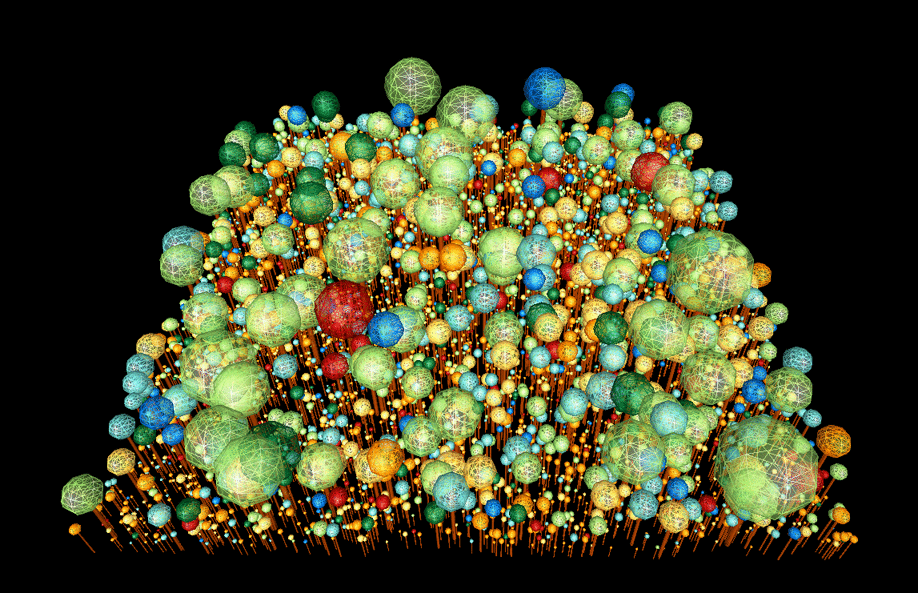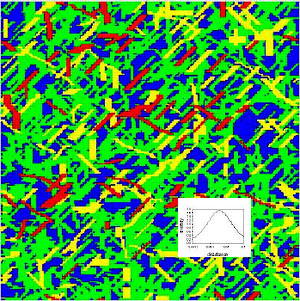Disturbances in Ecosystems

Many ecosystems are influenced by disturbances such as e.g. land-use, fragmentation, fire, floods or storms. Despite the fundamental relevance of these disturbances for the dynamics, structure, diversity and functioning of these ecosystems we still lack a comprehensive understanding how vulnerable and sensitive disturbed ecosystems are to changes in their disturbance regime. In particular the interaction of different disturbances and between disturbances and other stress factors (such as habitat loss, pollution or temperature change) is not yet well understood and studied. However, alterations or combinations of disturbances and multiple stresses are highly relevant in the face of climate change.
The last decades have shown that many species up to communities and ecosystems are not able to cope with such combined changes.
In addition, it has been shown that different ecological communities respond in different ways and with different, positive or negative,
consequences.

Our department meets these challenges by adressing the following issues:
- Analysis of multiple disturbances (logging, fire, landslides, storms, fragmentation) and climatic stressors (drought, CO2, increased temperatures) on the structure and dynamics of forests
- Impact of management (mowing, fertilization, irrigation) and climatic stressors (drought, CO2, increased temperatures) on the structure and dynamics of grasslands
- Geographic range shifting of species and communities in dynamic landscapes
- Impact of environmental stress and disturbances on the stability and functioning of microbial ecosystems
- Modelling the isolated and combined effect of stressors on honeybee colonies
- Population and community dynamics under different disturbance regimes
- Functional resilience of aquatic ecosystems under multiple stressors
- Ecological-Economic Modelling for grassland species conservation impacted by land use
Selected Publications
- Galic, N., Sullivan, L.L., Grimm, V., Forbes, V.E. (2018):
When things don’t add up: quantifying impacts of multiple stressors from individual metabolism to ecosystem processing
Ecol. Lett. 21 (4), 568 - 577 10.1111/ele.12923 - Knapp, N., Fischer, R., Huth, A. (2018):
Linking lidar and forest modeling to assess biomass estimation across scales and disturbance states
Remote Sens. Environ. 205 , 199 - 209 10.1016/j.rse.2017.11.018 - Brinck, K., Fischer, R., Groeneveld, J., Lehmann, S., Dantas de Paula, M., Pütz, S., Sexton, J.O., Song, D., Huth, A. (2017):
High resolution analysis of tropical forest fragmentation and its impact on the global carbon cycle
Nat. Commun. 8 , art. 14855 10.1038/ncomms14855 - Drechsler, M., Johst, K. (2017):
Rapid assessment of metapopulation viability under climate and land-use change
Ecol. Complex. 31 , 125 - 134 10.1016/j.ecocom.2017.06.005 - Galic, N., Grimm, V., Forbes, V.E. (2017):
Impaired ecosystem process despite little effects on populations: modeling combined effects of warming and toxicants
Glob. Change Biol. 23 (8), 2973 - 2989 10.1111/gcb.13581 - Karakoç, C., Singer, A., Johst, K., Harms, H., Chatzinotas, A. (2017):
Transient recovery dynamics of a predator–prey system under press and pulse disturbances
BMC Ecology 17 , art. 13 10.1186/s12898-017-0123-2 - Singer, A., Johst, K. (2017):
Transience after disturbance: Obligate species recovery dynamics depend on disturbance duration
Theor. Popul. Biol. 115 , 81 - 88 10.1016/j.tpb.2017.04.004 - Horn, J., Becher, M.A., Kennedy, P.J., Osborne, J.L., Grimm, V. (2016):
Multiple stressors: using the honeybee model BEEHAVE to explore how spatial and temporal forage stress affects colony resilience
Oikos 125 (7), 1001 - 1016 10.1111/oik.02636 - Singer, A., Johst, K., Banitz, T., Fowler, M.S., Groeneveld, J., Gutiérrez, A.G., Hartig, F., Krug, R.M., Liess, M., Matlack, G., Meyer, K.M., Pe'er, G., Radchuk, V., Voinopol-Sassu, A.-J., Travis, J.M.J. (2016):
Community dynamics under environmental change: How can next generation mechanistic models improve projections of species distributions?
Ecol. Model. 326 , 63 - 74 10.1016/j.ecolmodel.2015.11.007 - Urban, M.C., Bocedi, G., Hendry, A.P., Mihoub, J.-B., Pe'er, G., Singer, A., Bridle, J.R., Crozier, L.G., De Meester, L., Godsoe, W., Gonzalez, A., Hellmann, J.J., Holt, R.D., Huth, A., Johst, K., Krug, C.B., Leadley, P.W., Palmer, S.C.F., Pantel, J.H., Schmitz, A., Zollner, P.A., Travis, J.M.J. (2016):
Improving the forecast for biodiversity under climate change
Science 353 (6304), aad8466-1 - aad8466-9 10.1126/science.aad8466 - Johst, K., Drechsler, M., Mewes, M., Sturm, A., Wätzold, F. (2015):
A novel modeling approach to evaluate the ecological effects of timing and location of grassland conservation measures
Biol. Conserv. 182 , 44 - 52 10.1016/j.biocon.2014.11.033 - Kazmierczak, M., Johst, K., Huth, A. (2015):
Conservatives and Gamblers: Interpreting plant functional response to water stress in terms of a single indicator
Ideas Ecol. Evol. 8 (1), 29 - 41 10.4033/iee.2015.8.5.n
